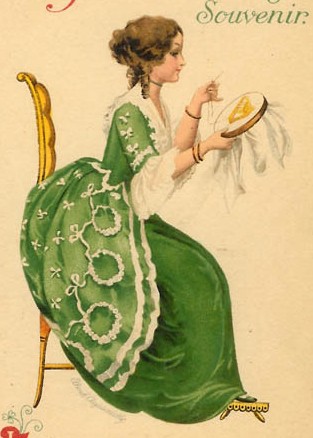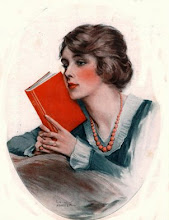.JPG)
Why Your Great Grandmother Wasn't An Indian Princess:
Excerpted from Vine Deloria. Jr..
"Indians Today, the Real and theUnreal," from Custer Died for Your Sins: An Indian Manifesto, New York. Macmillan, no. 1-27. 1969.
"During my three years as Executive Director of the National Congress of American Indians it was a rare day when some white didn't visit my office and proudly proclaim that he or she was of Indian descent."
"Cherokee was the most popular tribe of their choice and many people placed the Cherokees anywhere from Maine to Washington State. Mohawk, Sioux, and Chippewa were next in popularity. Occasionally, I would be told about some mythical tribe from lower Pennsylvania, Virginia, or Massachusetts which had spawned the white standing before me.
"At times I became quite defensive about being a Sioux when these white people had a pedigree that was so much more respectable than mine. But eventually I came to understand their need to identify as partiallyIndian and did not resent them. I would confirm their wildest stories about their Indian ancestry and would add a few tales of my own hoping that they would be able to accept themselves someday and leave us alone.
"Whites claiming Indian blood generally tend to reinforce mythical beliefs about Indians. All but one person I met who claimed Indian blood claimed it on their grandmother's side. I once did a projection backward and discovered that evidently most tribes were entirely female for the first three hundred years of white occupation. No one, it seemed, wanted to claim a male Indian as a forebear.
"It doesn't take much insight into racial attitudes to understand the real meaning of the Indian grandmother complex that plagues certain whites. A male ancestor has too much of the aura of the savage warrior, the unknown primitive, the instinctive animal, to make him a respectable member of the family tree. But a young Indian princess? Ah, there was royalty for the taking. Somehow the white was linked with a noble house of gentility and culture if his grandmother was an Indian princess who ran away with an intrepid pioneer. And royalty has always been an unconscious but all-consuming goal of the European immigrant."
"The early colonists, accustomed to life under benevolent despots, projected their understanding of the European political structure onto the Indian tribe in trying to explain its political and social structure. European royal houses were closed to ex-convicts and indentured servants, so the colonists made all Indian maidens princesses, then proceeded to climb a social ladder of their own creation. Within the next generation, if the trend continues, a large portion of the American population will eventually be related to Powhattan."
"While a real Indian grandmother is probably the nicest thing that could happen to a child, why is a remote Indian princess grandmother so necessary for many whites? Is it because they are afraid of being classed as foreigners? Do they need some blood tie with the frontier and its dangers in order to experience what it means to be an American? Or is it an attempt to avoid facing the guilt they bear for the treatment of the Indian?
"The phenomenon seems to be universal. Only among the Jewish community, which has a long tribal-religious tradition of its own, does the mysterious Indian grandmother, the primeval princess, fail to dominate the family tree. Otherwise, there's not much to be gained by claiming Indian blood or publicly identifying as an Indian."


No comments:
Post a Comment